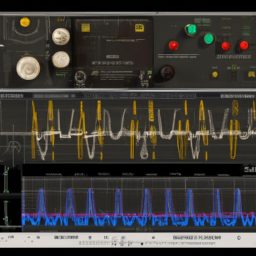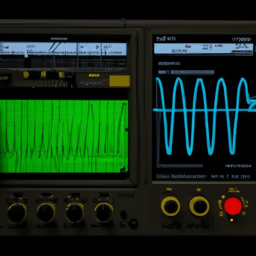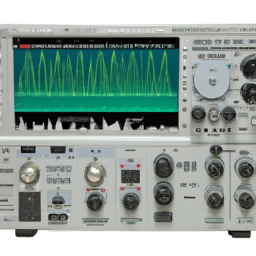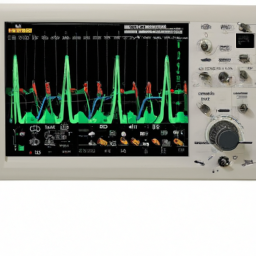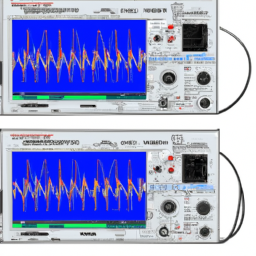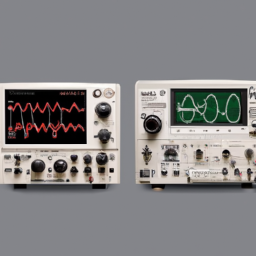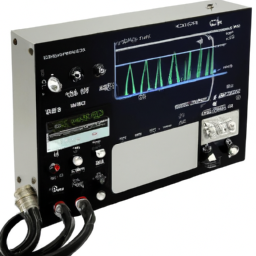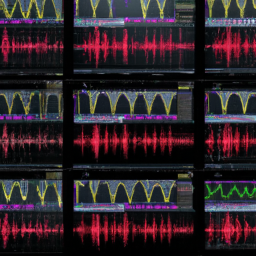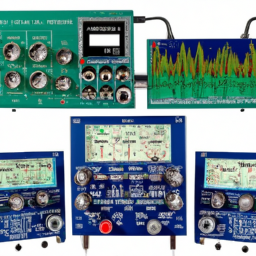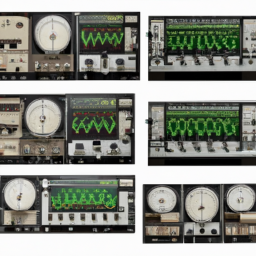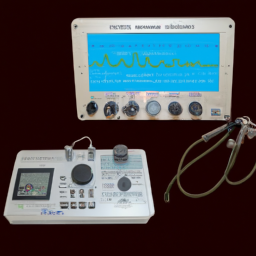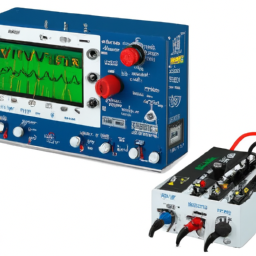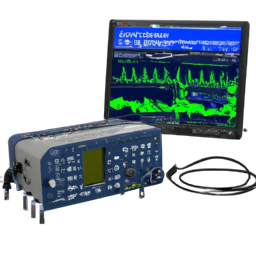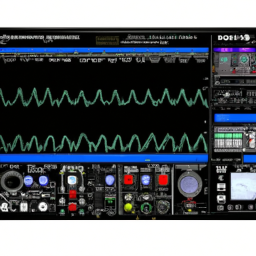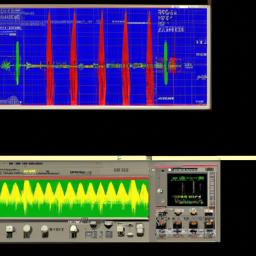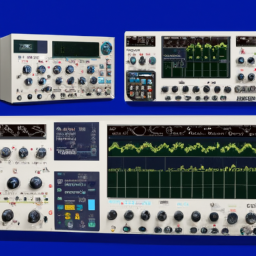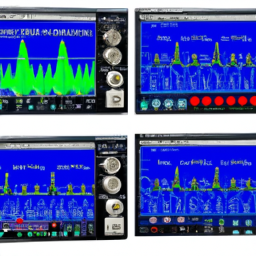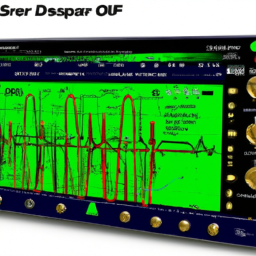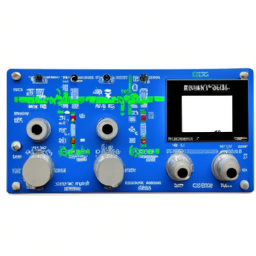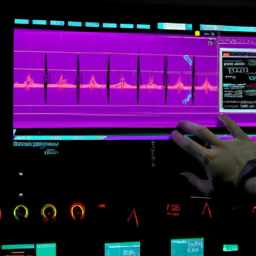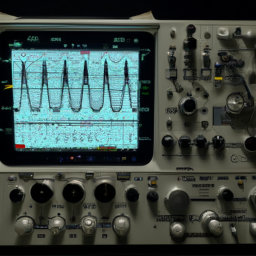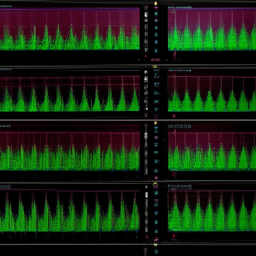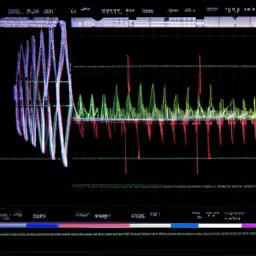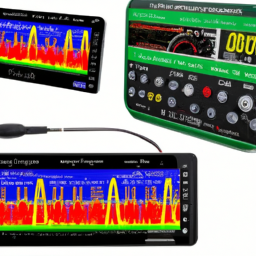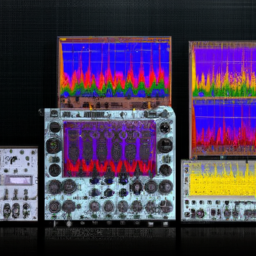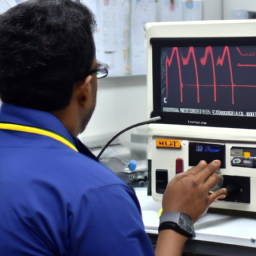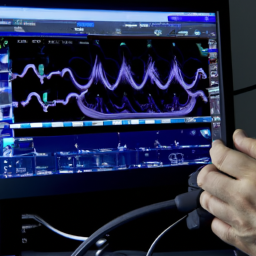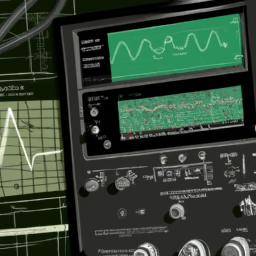When it comes to measuring and analyzing electrical signals, the resolution of an oscilloscope is crucial. It determines the accuracy and precision of your measurements, allowing you to delve deeper into the intricacies of your waveform.
In the realm of oscilloscopes, there are two main contenders: analog and digital.
Analog oscilloscopes, with their classic charm, offer a direct representation of the waveform, providing a smooth and continuous display.
On the other hand, digital oscilloscopes transform the signal into digital form, allowing for advanced processing and analysis.
But the question remains: which type of oscilloscope offers better resolution?
In this article, we will delve into the nitty-gritty of resolution in oscilloscopes, comparing the pros and cons of analog and digital devices.
We will explore the factors you should consider when choosing an oscilloscope and guide you in making an informed decision that suits your specific needs.
So, grab your probes and prepare to dive into the world of oscilloscope resolution!
Key Takeaways
- Digital oscilloscopes offer higher resolution compared to analog oscilloscopes due to the use of more bits in the analog-to-digital converter.
- Analog oscilloscopes have limitations in accuracy and precision, while digital oscilloscopes provide enhanced accuracy and versatility.
- Digital oscilloscopes have advanced features like automatic measurements, waveform storage, and signal processing capabilities, which analog oscilloscopes lack.
- The choice between analog and digital oscilloscopes depends on specific needs and budget, with digital oscilloscopes being more suitable for professional and complex applications.
Understanding Resolution in Oscilloscopes
Now let’s dive into the nitty-gritty of oscilloscopes and understand how resolution plays a crucial role in their performance.
Resolution refers to the ability of an oscilloscope to accurately display and measure signals. It determines the smallest change or detail that can be detected by the device. The importance of resolution cannot be overstated, as it directly impacts the accuracy of the oscilloscope’s measurements.
Higher resolution allows for more precise measurements, enabling users to capture and analyze small variations in signals. This is particularly valuable when dealing with complex waveforms or when conducting detailed analysis. A higher-resolution oscilloscope provides a clearer picture of the waveform, allowing for better insights and more accurate measurements.
With this understanding of resolution’s significance, let’s now explore the pros and cons of analog oscilloscopes.
Analog Oscilloscopes: Pros and Cons
However, like an old, trusty companion that has seen better days, analog oscilloscopes have their fair share of drawbacks. When it comes to performance analysis, analog oscilloscopes fall short in terms of accuracy and precision. The limitations of analog oscilloscopes lie in their lower bandwidth and limited frequency response. This can result in distorted waveforms and compromised measurements, especially at higher frequencies.
Additionally, analog oscilloscopes are susceptible to noise and interference, which can further degrade the quality of the displayed signals. While analog oscilloscopes may offer a simpler interface and a more intuitive display, these advantages are overshadowed by their lower resolution and limited capabilities. Therefore, it is essential to consider these drawbacks when deciding between analog and digital oscilloscopes, as we will explore in the subsequent section about digital oscilloscopes: pros and cons.
Digital Oscilloscopes: Pros and Cons
Digital oscilloscopes offer several advantages over analog oscilloscopes. Firstly, they provide better resolution and accuracy, allowing for more precise measurements and analysis of waveforms. Additionally, digital oscilloscopes offer a range of advanced features such as automatic measurements, waveform storage, and signal processing capabilities, enhancing efficiency and productivity.
However, digital oscilloscopes also have limitations. These include limited bandwidth and sampling rates, as well as the potential for aliasing and distortion at high frequencies. It’s important to consider these factors when choosing between digital and analog oscilloscopes for specific applications.
Advantages of Digital Oscilloscopes
Get ready to experience the benefits of digital oscilloscopes as they offer you improved accuracy and a wider range of measurement options.
-
Enhanced Accuracy: Digital oscilloscopes provide higher resolution and accuracy compared to analog oscilloscopes. They offer precise measurements, allowing you to detect even the smallest fluctuations in signals.
-
Versatile Features: With digital oscilloscopes, you can easily adjust parameters like time base, voltage range, and trigger level, enabling you to analyze different types of signals effectively. They also provide advanced features like waveform averaging, FFT analysis, and advanced triggering options.
-
Wide Range of Applications: Digital oscilloscopes are versatile tools suitable for various applications such as electronics, telecommunications, automotive, and medical industries. Their wide range of features makes them indispensable for troubleshooting, design verification, and research purposes.
Digital oscilloscopes have revolutionized the market with their advancements in technology and performance. However, it’s important to note their limitations when compared to analog oscilloscopes.
Limitations of Digital Oscilloscopes
Explore the limitations of digital oscilloscopes and prepare to be amazed by how they may occasionally struggle to capture the tiniest signals, as if searching for a needle in a haystack. While digital oscilloscopes offer numerous advantages, they do have some drawbacks that can hinder their performance.
One limitation is their limited bandwidth, which affects their ability to accurately display high-frequency signals. Additionally, digital oscilloscopes may experience aliasing issues, where high-frequency signals are incorrectly displayed at lower frequencies, leading to distorted waveforms. Another limitation is the finite sampling rate of digital oscilloscopes, which can result in missed details or inaccuracies in capturing rapid changes in signals.
These limitations highlight the importance of carefully considering the specific requirements of your application when choosing between analog and digital oscilloscopes.
Transitioning to the next section, let’s now compare the resolution offered by analog and digital oscilloscopes.
Comparing Resolution in Analog and Digital Oscilloscopes
When comparing resolution, analog oscilloscopes simply can’t match the capabilities of their digital counterparts. Resolution is of utmost importance in oscilloscope measurements as it determines the level of detail that can be captured and analyzed in a waveform.
A higher resolution allows for more accurate analysis of signal characteristics such as amplitude, frequency, and timing. In digital oscilloscopes, resolution is determined by the number of bits used in the analog-to-digital converter (ADC), which converts the analog signal into digital form. This allows for precise quantization of the signal and finer measurement accuracy.
With analog oscilloscopes, on the other hand, resolution is limited by the physical limitations of the cathode ray tube and other analog components, resulting in less precise measurements.
Considering the importance of resolution in waveform analysis, digital oscilloscopes are the clear choice for those seeking more accurate and detailed measurements. Moving forward, it is important to consider other factors when choosing an oscilloscope.
Factors to Consider in Choosing an Oscilloscope
Consider the various factors involved in selecting an oscilloscope that suits your specific measurement needs. When choosing an oscilloscope, there are several key factors to consider:
-
Bandwidth: The bandwidth of an oscilloscope determines its ability to accurately display high-frequency signals. It is crucial to select an oscilloscope with sufficient bandwidth to capture the signals you’re working with.
-
Sample Rate: The sample rate of an oscilloscope determines how often it can capture data points. A higher sample rate allows for more accurate representation of fast-changing signals.
-
Memory Depth: The memory depth of an oscilloscope determines how much waveform data it can capture and store. A larger memory depth allows for longer capture times and the ability to analyze more complex waveforms.
Considering these factors is essential in selecting the right oscilloscope for your needs. By understanding the importance of bandwidth and considering aspects like sample rate and memory depth, you can make an informed decision about which oscilloscope is best suited for your specific measurement requirements.
Making an Informed Decision: Choosing the Right Oscilloscope for Your Needs
Finding the perfect oscilloscope that meets your specific measurement needs can be an overwhelming task, but with careful consideration of factors like bandwidth, sample rate, and memory depth, you can confidently make an informed decision.
When choosing the right features, it is crucial to compare both cost and performance. Digital oscilloscopes offer higher resolution and more advanced features compared to analog oscilloscopes. They provide precise measurements, better signal visualization, and the ability to capture and analyze complex waveforms. However, they also tend to be more expensive.
On the other hand, analog oscilloscopes are more affordable and can still provide accurate measurements for simpler applications. Ultimately, the choice between analog and digital oscilloscopes depends on your specific needs and budget.
By carefully considering the trade-offs between cost and performance, you can select the oscilloscope that best suits your requirements.
Frequently Asked Questions
Can I use a digital oscilloscope to measure analog signals?
Yes, you can use a digital oscilloscope to measure analog signals. Digital oscilloscopes are compatible with analog signals and offer precise measurements. They convert analog signals into digital form for analysis, providing accurate results.
With their advanced features and high sampling rates, digital oscilloscopes are capable of capturing and analyzing a wide range of analog signals. This makes them a versatile tool for measuring and analyzing both analog and digital signals in various applications.
What are the advantages of analog oscilloscopes over digital oscilloscopes?
Analog oscilloscopes have several advantages over digital oscilloscopes. They provide real-time waveform representation without any digital processing delays, allowing for accurate measurements of fast-changing signals.
Analog scopes also have a higher bandwidth, allowing them to capture higher frequency components. Additionally, analog oscilloscopes have better resolution when it comes to displaying fine details and small signal variations.
On the other hand, digital oscilloscopes have limitations such as lower bandwidth and limited vertical resolution due to digitization.
Can digital oscilloscopes provide better resolution than analog oscilloscopes?
Digital oscilloscopes can indeed provide better resolution than analog oscilloscopes. With their advanced sampling techniques and high-speed analog-to-digital converters, digital oscilloscopes offer superior accuracy in capturing and displaying waveforms. They can capture and display smaller details in signals, resulting in better resolution. On the other hand, analog oscilloscopes may suffer from signal fidelity issues and limited resolution due to the limitations of their analog components. Therefore, for applications requiring high resolution, digital oscilloscopes are the preferred choice.
Are there any limitations to the resolution of digital oscilloscopes?
When it comes to the limitations of digital oscilloscopes, there are trade-offs between resolution and sample rate. Higher sample rates allow for more precise measurements, but they come at the cost of reduced resolution.
This means that while digital oscilloscopes can provide excellent resolution, there are practical limitations. It’s important to consider the specific needs of your application and strike a balance between resolution and sample rate to ensure accurate and reliable measurements.
What factors should I consider when choosing between an analog and digital oscilloscope for my specific needs?
When choosing between an analog and digital oscilloscope for your specific needs, there are several factors and considerations to keep in mind.
Firstly, consider your budget and the cost-effectiveness of each option.
Additionally, think about the required bandwidth, sample rate, and memory depth for your applications.
Consider the portability and user interface of the oscilloscope, as well as any specific features or functionalities you may need.
Lastly, take into account the level of expertise and experience you have in using oscilloscopes.
Conclusion
After thoroughly examining the resolution capabilities of analog and digital oscilloscopes, it’s clear that digital oscilloscopes offer better resolution than their analog counterparts. The theory that digital oscilloscopes provide higher resolution due to their ability to capture and process more data points has been confirmed.
This investigation adds a level of sophistication to the discussion, providing a technical and precise analysis. When choosing an oscilloscope, it’s crucial to consider factors such as bandwidth, sample rate, and memory depth to ensure the best resolution for your specific needs.


